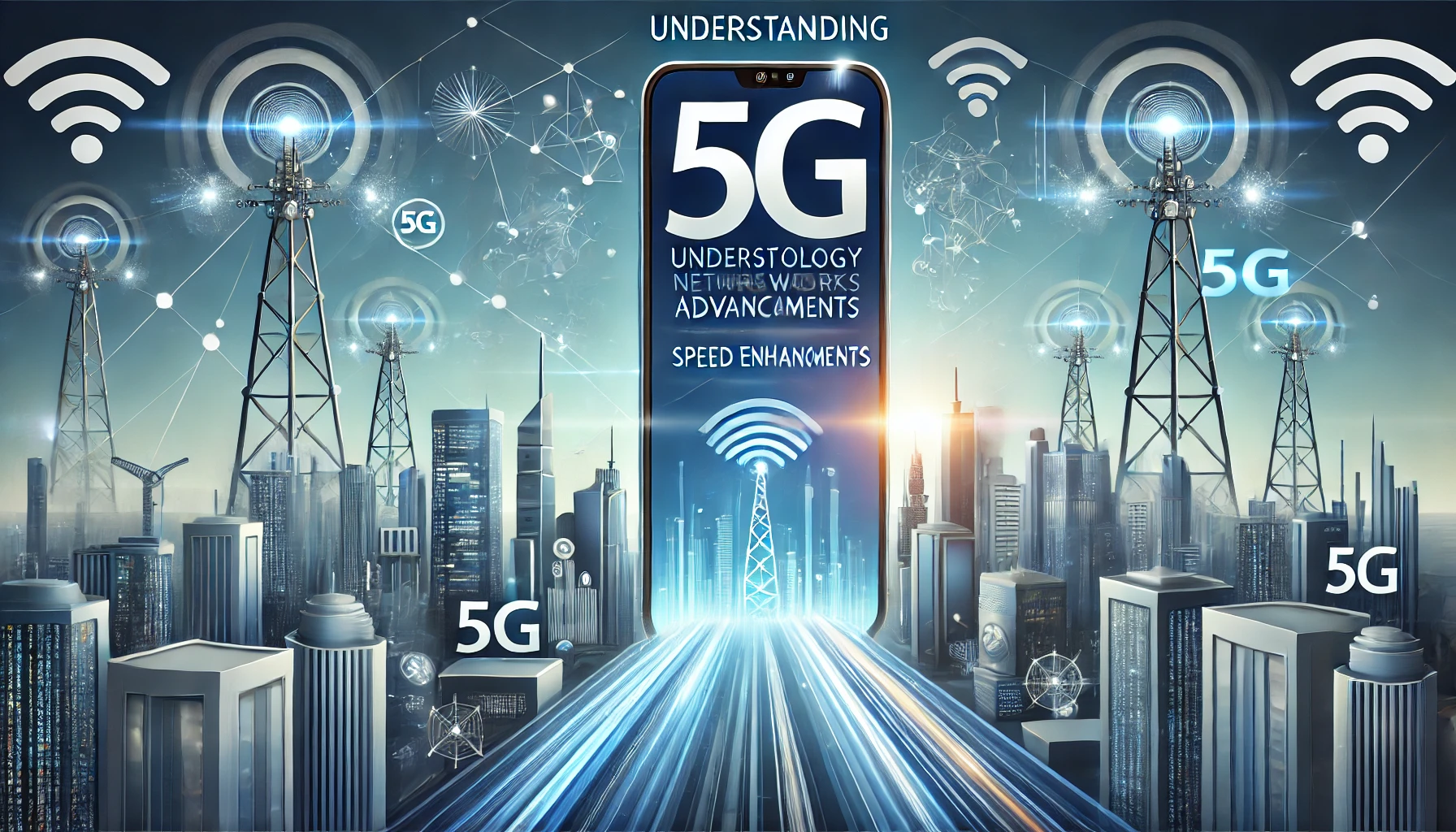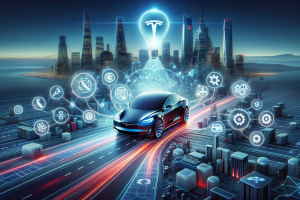5G Technology: Network Advancements and Speed Enhancements
5G technology is revolutionizing the way we connect, communicate, and interact with the world around us. As the latest generation of wireless technology, 5G promises to deliver unprecedented speeds, enhanced network capabilities, and transformative applications across various industries. In this comprehensive guide, we will delve into the advancements in 5G technology, the infrastructure supporting it, its speed enhancements, and the applications shaping the future of connectivity.
What is 5G Technology?
5G Technology Overview
5G technology, the fifth generation of wireless network technology, is designed to significantly improve the speed and responsiveness of wireless networks. Unlike its predecessor, 4G, 5G uses higher frequency bands and advanced technologies to provide faster data transmission, lower latency, and greater capacity. The key features of 5G include:
- Enhanced Mobile Broadband (eMBB): Delivers faster internet speeds and supports high-definition streaming and augmented reality (AR) applications.
- Ultra-Reliable Low Latency Communications (URLLC): Ensures minimal delay, which is crucial for applications like autonomous driving and remote surgeries.
- Massive Machine Type Communications (mMTC): Supports the connectivity of a vast number of devices, facilitating the growth of the Internet of Things (IoT).
Advancements in 5G Network
The development of 5G networks involves significant advancements in network architecture and infrastructure. These include:
- Small Cells: Small cell technology involves deploying numerous small base stations to enhance coverage and capacity, particularly in urban areas. This technology supports the high-frequency millimeter waves used in 5G.
- Massive MIMO (Multiple Input, Multiple Output): This technology uses multiple antennas to transmit and receive more data simultaneously, increasing network capacity and efficiency.
- Beamforming: Beamforming directs signals to specific users, improving the efficiency and quality of wireless communication.
5G Devices and Infrastructure
5G Smartphones
The proliferation of 5G smartphones is one of the most visible impacts of 5G technology. These devices are equipped with advanced modems capable of supporting the high speeds and low latency of 5G networks. Major smartphone manufacturers, including Apple, Samsung, and Huawei, have released 5G-compatible models, providing consumers with faster download and upload speeds, enhanced video streaming, and improved gaming experiences.
5G Infrastructure
The rollout of 5G infrastructure is a massive undertaking that involves upgrading existing cellular networks and installing new hardware. Key components of 5G infrastructure include:
- Base Stations: These are the central nodes that facilitate wireless communication between the network and user devices. 5G base stations are designed to handle higher data rates and increased traffic.
- Fiber Optic Cables: Fiber optic cables provide the high-speed backhaul necessary to support the data demands of 5G networks. They connect base stations to the core network, ensuring fast and reliable data transmission.
- 5G Antennas: Advanced antennas, such as those used in Massive MIMO systems, are critical for the efficient operation of 5G networks. These antennas can handle multiple data streams simultaneously, improving network capacity and coverage.
5G Antennas
5G antennas are essential components of the 5G infrastructure. They are designed to support the higher frequency bands used in 5G networks, which require precise alignment and efficient signal transmission. The benefits of 5G antennas include:
- Improved Coverage: 5G antennas enhance network coverage by providing stronger and more focused signals.
- Higher Capacity: Advanced antenna technologies like Massive MIMO enable networks to handle more simultaneous connections, supporting the growing number of 5G devices.
The Speed of 5G
5G Speed Enhancements
One of the most significant advantages of 5G technology is its ability to deliver extremely high speeds. 5G networks can achieve download speeds of up to 10 Gbps, which is significantly faster than 4G networks. This speed enhancement is made possible by:
- Higher Frequency Bands: 5G uses millimeter waves, which have higher frequencies and can carry more data than the lower frequency bands used in 4G.
- Advanced Modulation Techniques: These techniques increase the efficiency of data transmission, allowing more data to be sent over the same bandwidth.
5G vs 4G
The comparison between 5G and 4G highlights the advancements brought by the new technology. Key differences include:
- Speed: 5G is up to 100 times faster than 4G, enabling quicker downloads, smoother streaming, and better real-time applications.
- Latency: 5G networks have significantly lower latency, reducing the delay between sending and receiving data. This is crucial for applications like online gaming and autonomous vehicles.
- Capacity: 5G can support a much larger number of devices per square kilometer, making it ideal for densely populated urban areas and the expanding IoT ecosystem.
5G Coverage and Comparisons
5G Coverage Map
Understanding the coverage of 5G networks is essential for both consumers and businesses. A 5G coverage map provides a visual representation of where 5G services are available, helping users determine if they can access the benefits of 5G technology. Factors influencing 5G coverage include:
- Deployment of Small Cells: Small cells are crucial for providing 5G coverage in urban areas, where higher frequency signals may be obstructed by buildings and other structures.
- Spectrum Allocation: The availability of frequency bands for 5G use varies by region, affecting the overall coverage and performance of 5G networks.
Mapping the Future: 5G Coverage and How It Compares to 4G
While 5G offers superior performance, its coverage is still expanding. In many areas, 4G networks remain the primary source of wireless connectivity. Comparing the coverage of 5G and 4G networks reveals:
- Urban vs Rural Areas: 5G coverage is more concentrated in urban areas due to the higher density of small cells and infrastructure investments. Rural areas may continue to rely on 4G for the foreseeable future.
- Global Rollout: Countries like South Korea, the United States, and China are leading the way in 5G deployment, while others are gradually building their 5G infrastructure.
5G Applications and IoT
5G Applications
The applications of 5G technology extend across various sectors, transforming industries and enhancing everyday life. Notable 5G applications include:
- Healthcare: 5G enables telemedicine, remote surgeries, and real-time monitoring of patients’ health data, improving access to healthcare services.
- Automotive: 5G supports autonomous vehicles by providing reliable, low-latency communication between cars and infrastructure, enhancing safety and efficiency.
- Entertainment: 5G enhances the quality of video streaming, virtual reality (VR), and augmented reality (AR) experiences, providing users with immersive entertainment options.
5G IoT
The Internet of Things (IoT) is set to benefit immensely from 5G technology. 5G IoT applications include:
- Smart Cities: 5G supports the development of smart cities by enabling real-time data collection and analysis, improving traffic management, public safety, and energy efficiency.
- Industrial IoT: 5G facilitates the use of connected devices in manufacturing, agriculture, and logistics, optimizing processes and increasing productivity.
- Consumer IoT: 5G enhances the functionality of smart home devices, wearables, and other consumer electronics, providing seamless connectivity and improved performance.
5G technology is transforming the landscape of wireless communication, bringing advancements in network capabilities, speed, and applications. From the enhanced mobile broadband and ultra-reliable low latency communications to the massive machine-type communications, 5G is set to revolutionize how we connect and interact with the world. As we move forward, the continued development and deployment of 5G infrastructure, devices, and applications will play a crucial role in shaping the future of connectivity.
For more insights into 5G technology and its impact on various industries, visit Regent Studies. Stay informed about the latest developments in 5G network advancements and speed enhancements, and explore how this transformative technology is poised to revolutionize our world.
References:




